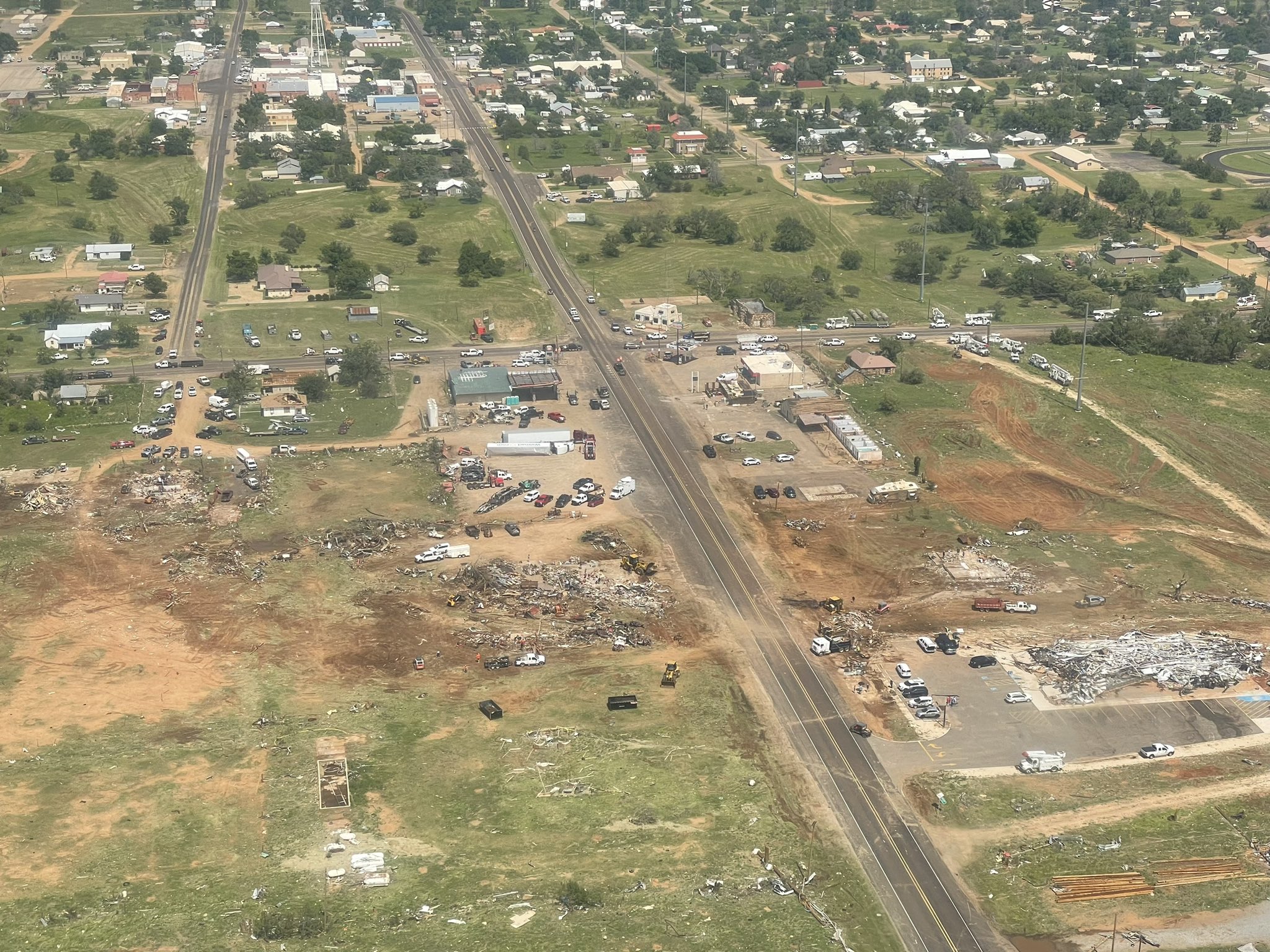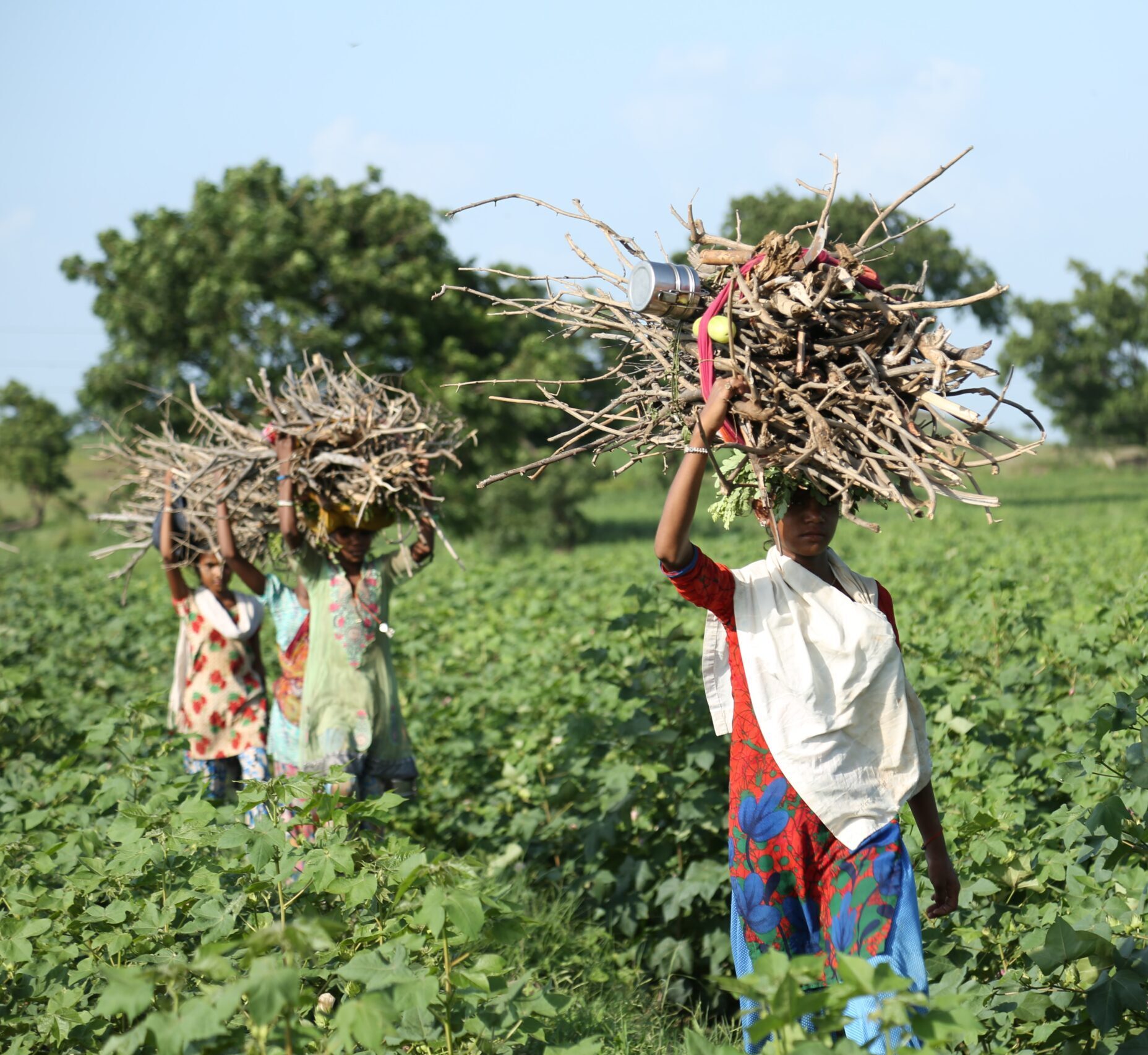What we’re watching: Weekly disaster update, June 26

We know all too well that disaster can strike anytime, anywhere in the world. Some disasters make headlines; others do not. Here at the Center for Disaster Philanthropy (CDP), we monitor the status of disasters worldwide and compile a list of the ones we’re tracking weekly, along with relevant disaster-related media coverage.
Here’s what we’re watching for the week of June 26, 2023.
New or Emerging Disasters
Indiana – Tornadoes: Suspected tornadoes were reported in Indiana over the weekend, with at least one person in Martin County killed. At least one additional tornado was likely in Johnson County, near New Whiteland. Videos posted to social media appeared to show a tornado moving through Greenwood, throwing debris into the air. Around seven miles southwest of Bargersville, another town in Johnson County, at least 75 homes were damaged after a tornado hit the area.
For more, see our 2023 US Tornadoes disaster profile.
Texas – Tornadoes: A severe storm swept through the northern Texas town of Matador on June 21, killing four people and injuring at least ten. The National Weather Service (NWS) confirmed a tornado with a preliminary rating of EF-3 touched down in the area. The NWS estimates the peak winds at 165 miles per hour. Damage reports show 29 structures destroyed and 34 damaged. Matador is located in Motley County, one of the counties added to Governor Greg Abbott’s June 16th disaster declaration for severe weather across the state.
Recovery is ongoing for residents of Perryton, who were affected by an EF-3-rated tornado on June 15. The tornado resulted in the death of an 11-year-old boy and injuries to 100 others. Reconstruction will take time, but the community has come together to pick up debris and provide meals.
Tornadoes have been particularly deadly this year. According to AccuWeather Senior Weather Editor Jesse Ferrell, there have been 22 deadly tornadoes so far in 2023, which is the most since 2011.
For more, see our 2023 US Tornadoes disaster profile.
Texas – Heatwave: Forecast models show the weather pattern that has brought extreme heat to Texas for more than a week is unlikely to end until at least early July. Daytime temperatures are abnormally high, but the overnight lows are also close to or at record levels. San Antonio had 21 hours with a heat index above 110 degrees over the past week.
Extreme heat in the state has led to increased hospital visits for heat-related illnesses and may have contributed to the death of a U.S. Postal Service worker in Dallas. Determining heat-related deaths is difficult, given the number of contributing factors and the challenge of gathering body temperature data right before or immediately after death.
Millions of people remain affected by excessive heat warnings and heat advisories in Texas, Louisiana and other parts of the U.S. Southwest.
Heat waves are among the most dangerous natural hazards. CDP’s Extreme Heat Issue Insight provides information about this hazard and how philanthropy can help.
India – Heatwave: From mid-June, the northern state of Uttar Pradesh and Bihar in India’s east have endured a severe heatwave with temperatures reaching 113 degrees Fahrenheit (45 Celsius). At least 96 deaths were reported due to heat-aggravated conditions, with the majority in one Uttar Pradesh district. A team of experts sent by the government said other factors may have played a role in the deaths. Many Indian’s livelihoods require them to perform manual labor, even on sweltering days, with people with lower incomes particularly affected. Recent rainfall in Uttar Pradesh has provided some respite from the high temperatures, but the heatwave is expected to continue in Bihar.
Brazil – Cyclone: The southern state of Rio Grande do Sul in Brazil was hit by a cyclone on June 16, producing heavy rains and flooding. Maquine, a municipality on the eastern coast, received around a foot of rain. Within the first couple of days of the disaster, authorities said they carried out 2,400 rescues. The storm resulted in at least 13 deaths. This is the third storm to cause major flooding in southern Brazil this year.
Previous/Ongoing Disasters
Complex Humanitarian Emergency – Ukraine: More than two weeks have passed since the destruction of the Kakhovka Dam on June 6. The subsequent flooding has significantly receded and left behind damage, an unconfirmed number of civilians killed or injured, and a worsened humanitarian situation.
Around 200 houses remain flooded in areas of the Khersonska oblast, and nearly 4,000 people are displaced in Khersonska and Mykolaivska oblasts. In the short-term, access to drinking water, hygiene items and food are the most immediate needs. However, there are concerns about the possibility of disease outbreaks caused by stagnant and contaminated water.
The Kakhovka Reservoir, one of Europe’s largest, is drying up after the dam destruction, with at least four canal networks disconnected. The canals provide drinking water to parts of southern Ukraine and agricultural irrigation. Experts are concerned about hampered food production in that part of the country.
For more, see our Ukraine Humanitarian Crisis disaster profile.
Volcano – Philippines: Mount Mayon, the Philippines’ most active volcano, began spewing lava and sulfuric gas on June 11. On June 8, the Philippine Institute of Volcanology and Seismology raised the volcano’s alert level to three out of possible five, prompting the evacuation of nearly 13,000 residents. The volcano in Albay province continues to discharge lava and spew rocks “in a gentle and quiet manner.” The government said that as of June 25, “Alert Level 3 is maintained over Mayon Volcano, which means that it is currently in a relatively high level of unrest as magma is at the crater and hazardous eruption within weeks or even days is possible.”
In addition to the disasters listed above, we actively monitor the following disasters or humanitarian emergencies. For more information, see the relevant disaster profiles, which are updated regularly.
- Afghanistan Humanitarian Crisis
- Cyclone Mocha
- Horn of Africa Hunger Crisis
- 2023 Turkey-Syria Earthquake
U.S. Midwest Low-Attention Disasters
The Midwest is regularly faced with low-attention disasters that affect people across the region. CDP’s Midwest Early Recovery Fund (ERF) effectively funds efforts that catalyze equitable disaster recovery.
These are some of the latest disasters and related news the ERF team is monitoring:
- A tornado touched down on June 18 in eastern Logan County, Arkansas. No injuries or fatalities were reported. However, the tornado caused power outages, downed trees and damaged some structures. A preliminary report from the NWS in Little Rock said the tornado was an EF-2, with estimated 120 miles per hour winds.
- Storm damage was reported across Kansas on June 17-18. Hail was reported in Sedgwick County, and a storm caused flooding in Wallace County.
Complex Humanitarian Emergencies – Cameroon
Many places worldwide are experiencing emergencies caused by conflict, climate change, drought, famine, economic challenges and other conditions that combine to create a complex humanitarian emergency (CHE). CDP maintains complete profiles on several CHEs, and what CDP considers Level 1 CHEs are profiled in this weekly blog post and tracked.
Cameroon’s complex, protracted humanitarian crisis results from inter-communal violence in the Far North region, insecurity in the Northwest and Southwest (NWSW) region, and crises in Nigeria and Central African Republic (CAR). In 2023, 4.7 million people need humanitarian assistance and protection, a 20% increase from last year.
The prolonged nature of the triple crises, repeated displacement and insufficient funding hamper people’s already limited resilience. The food insecurity situation is worsening with a deterioration of nutrition for children aged 6-59 months in the Far North, North, Adamawa and East. Three million people are experiencing acute food insecurity. There are urgent treatment needs for severe acute malnutrition.
Insecurity and conflict are drivers of humanitarian needs and persist. In May 2023, armed men killed at least 12 people in northern Cameroon. The attack was attributed to Islamist Boko Haram, which is active in the region. There is also a reported rise of conflicts over natural resources such as water and pastures. As of June 5, donors had provided just 9.1% of the $407.3 million requested in Cameroon’s 2023 Humanitarian Response Plan.
Upcoming webinars

July 13: The gendered nature of climate change

Aug. 10: Disaster case management: Navigating recovery one person at a time
What We’re Reading
- Global Humanitarian Assistance Report 2023 – Development Initiatives: The report assesses the international financing response to crisis. Key causes of crises include conflict, climate or economic fragility. The report’s authors say, “Looking beyond humanitarian assistance, ideas for change reinforce the need to build the resilience of affected communities through long-term development strategies and mobilising funding for anticipatory action and additional climate finance.”
- What the latest funding data says about the humanitarian system – The New Humanitarian: The Global Humanitarian Assistance Report 2023 shows humanitarian funding reached a record $47 billion in 2022. However, humanitarian needs also grew, leaving a $20 billion shortfall for UN-backed humanitarian appeals. Ramesh Rajasingham, director for coordination at the UN’s humanitarian aid coordination arm, OCHA, said, “The humanitarian system remains under huge amounts of strain.”
- Drop in Giving From 2021 to ‘22 Was Among the Steepest Ever, ‘Giving USA’ Found – The Chronicle of Philanthropy: Giving dropped 10.5% after inflation, marking only the fourth time donations have fallen since Giving USA started keeping track in 1956. High inflation is one reason for the decline, as small donors felt the pinch, and wealthier donors saw stock market losses.
- The 990s are here. Why that’s a big deal and what happens now – Candid: U.S. tax-exempt organizations are requested to file Form 990 with the IRS annually, sharing information about themselves. Having 990s from 2020–2021 means we gain a more comprehensive picture of what happened to the sector during the COVID-19 pandemic.
- New Evidence of Growing Funder Trust as Nonprofits Confront Continued Challenges – The Center for Effective Philanthropy: In a new CEP study, nonprofit leaders reported: “seeing shifts in related funder practices including streamlined application and reporting processes, more unrestricted support, and, from some individual donors, increased giving levels.” However, there is room for improvement.
Continuing the bear theme from last week’s post, a bear broke into a Colorado home, munched on some pork chops and was caught on video trying to escape from a second-floor window.
